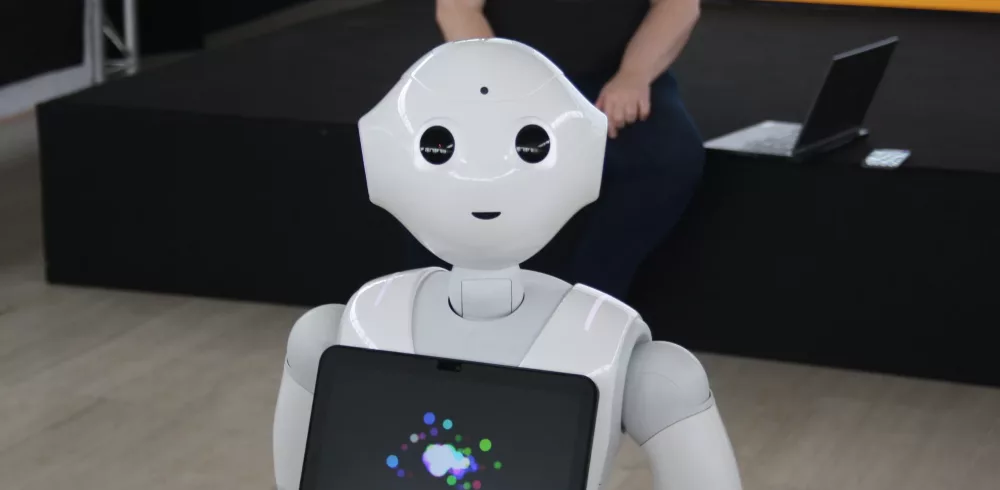Showcasing Innovation in Smart Cities ~ Annual European Smart City Robotics Competition showcases innovation in robotics and automation ~
In September, researchers and engineers from across Europe came together to compete in the annual European Smart City Robotics Competition, being held for the second time in the city that a myriad of industry-leading robotics companies call home – Milton Keynes. Industrial automation experts, Beckhoff UK sponsored the annual event, and were on hand to offer advice to the teams competing throughout the week.
Organised by the European Robotics League (ERL), the annual competition challenges teams of researchers and engineers to create a robot that can perform a range of tasks in real-world scenarios. The competition is divided into five episodes, each focusing on a specific aspect of robotics such as perception and navigation. The teams taking part were: Cranfield University, LASR (Learning Autonomous Service Robots) from Kings College London, MK Robotics, b-it-bots (University of Bonn-Rhein-Sieg), Buckingham Swans, homer@uniKoblenz, UC3M_Tiago (University of Charles III Madrid), Team MKC/IOT and Swift Robotics.
Robots are capable of performing many tasks, but one of the hardest things to recreate is simple human movement. The teams who competed in the competition showcased their robot’s abilities in tasks such as delivering coffee orders, taking elevators, picking and packing shopping items, opening doors and fetching objects.
“Looking back to my first robot competition in 1999, it’s astonishing to see how far robotics has evolved since then,” said Dr Reinhardt Lafrenz of the European Robotics Association. “Over the years, hardware development has been a slow journey, while software and vision components have raced ahead. However, it’s crucial to remember that the mechanical foundation remains the bedrock of it all.
“Moreover, the cross-pollination between computers and mechatronics has been remarkable. This interplay is a vital element for teams to master, especially in an interdisciplinary context. Such skills are invaluable when you enter the industry, where effective communication across disciplines is a must.
“This learning process continues to be a significant part of the journey. Stepping outside the comfort of your own lab presents unique challenges. Even if you believe the environment is similar, the conditions and minimal requirements often differ significantly.”
Beckhoff UK also had a stand at the event, showcasing a DOBOT CR3 collaborative robot combined with the company’s XPlanar motion system, performing a pick and place task. Comprising of a mover, tile and control software, XPlanar uses integrated magnets that allow it to lift heavy loads and travel dynamically across the tile track. The movers are robust and feature an edge-free surface, and the contactless movement means that no guide rails or lubrication is needed, reducing maintenance requirements. Each tile communicates rapidly via EtherCAT, eliminating the need for mechanical connections and allowing seamless integration with the XPlanar software and TwinCAT 3 control system.
“One of the key things shown in this demonstration is the compatibility with EtherCAT,” said Finlay Gronmark, technical support engineer at Beckhoff UK. “The beauty of TwinCAT lies in its openness. It’s readily available, allowing seamless integration with third-party products. Our philosophy is all about giving you the freedom to choose. We’re not locking you into our ecosystem or restricting you to only our products. Instead, we’re saying, ‘Here, you can leverage our IPCs and communication protocol as a foundation, and from there, you can explore and diversify to your heart’s content.’ It’s a fantastic advantage for our customers.”
The European Robotics League hosts local and major tournaments in Europe, focusing on three key robotics areas within the smart urban environment theme. Teams participate in annual local tournaments organised by esteemed European robotics institutes. Every two years, the SciRoc Challenge (also known as the ERL Smart Cities Robotics Challenge) unfolds in cities across Europe, uniting robots from all categories to interact with urban infrastructure.
The contest prioritises consistent benchmarking rather than crowning a single winner and are aligned with three core objectives: addressing Europe’s aging population challenge, bolstering the European robotics service industry, and advancing autonomous systems for emergency response.
Additionally, robot competitions serve educational purposes, offering a valuable platform for nurturing the skills of future engineers and scientists. They raise student awareness and understanding of applied research and development in the field of robotics.
To find out more about Beckhoff’s XPlanar motion system, visit the company website.
Manufacturing & Engineering Magazine | The Home of Manufacturing Industry News















